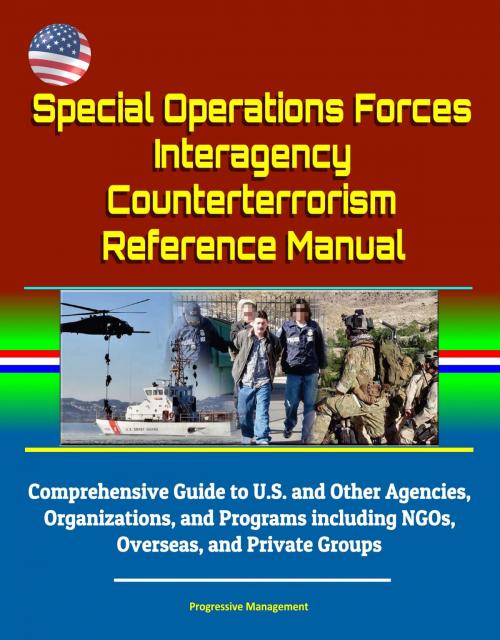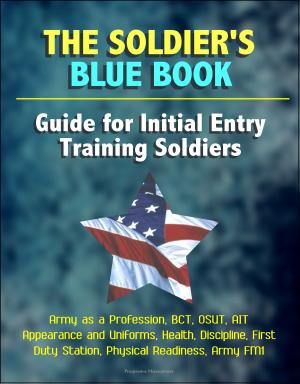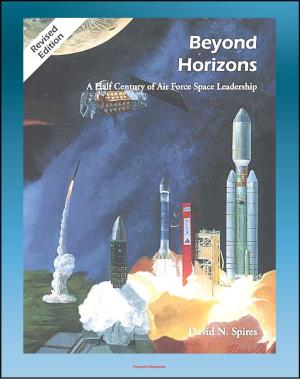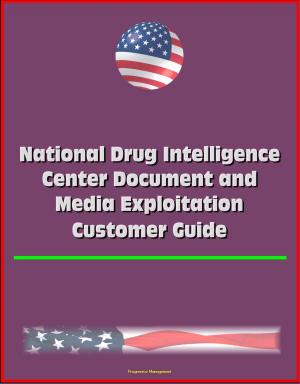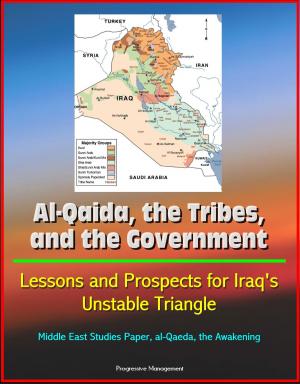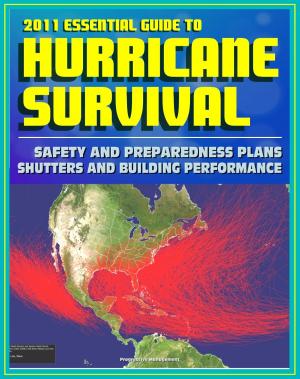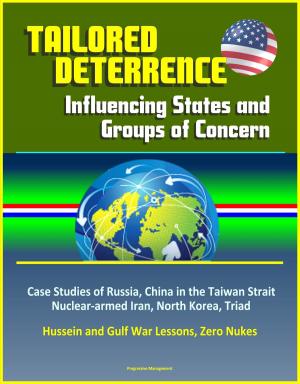Special Operations Forces Interagency Counterterrorism Reference Manual: Comprehensive Guide to U.S. and Other Agencies, Organizations, and Programs including NGOs, Overseas, and Private Groups
Nonfiction, History, Military, Social & Cultural Studies, Political Science| Author: | Progressive Management | ISBN: | 9780463243305 |
| Publisher: | Progressive Management | Publication: | June 23, 2018 |
| Imprint: | Smashwords Edition | Language: | English |
| Author: | Progressive Management |
| ISBN: | 9780463243305 |
| Publisher: | Progressive Management |
| Publication: | June 23, 2018 |
| Imprint: | Smashwords Edition |
| Language: | English |
This report has been professionally converted for accurate flowing-text e-book format reproduction.
The manual provides insight and information regarding various counterterrorism (CT) organizations in the U.S. Government national security apparatus. This project began as a discussion of CT overseas. Because of the changing international security environment and policies set by the National Security Council (NSC), the scope has expanded a bit to include representation from some aspects of the domestic CT mission. New information contained in this edition addresses the continued evolution of NSC thinking that narrows the distinction between overseas and domestic CT efforts. Additionally, the increasing emphasis on transnational criminal organizations and the consequences of their activities for CT practitioners has provided fresh impetus to interagency CT initiatives. Perhaps most significant is the inclusion of expanded concepts of civilian power and their implications for Diplomacy and Development that emerged from the publication of the First Quadrennial Diplomacy and Development Review in 2010. Expanded sections on countering terrorist finance operations, interagency responses to cyber threats, and strategic communication reflect general acknowledgement of the importance of these capabilities. As before, updated collections of definitions, organizations, programs and acronyms are included to provide the special operations warrior with an improved, practical, quick-reference guide to the interagency community.
The content of this manual represents an ongoing, dynamic project to capture existing interagency counterterrorism structures, organizations, responsibilities, and work flow. Changes driven by new presidential administrations, fresh policy and current events inevitably alter the interagency landscape. All information comes from open sources to include official fact sheets and background obtained from various official Web sites. The cutoff date for input to this third Edition was 30 June 2013. Any omissions are completely unintentional.
Foreword * Introduction * Chapter 1. Interagency Counterterrorism Components * 3-Ds (Defense, Diplomacy, and Development): Civilian Power and SOF * Counterterrorism Roles, Missions, and Responsibilities * Functioning of the Interagency Counterterrorism Components * Interagency Efforts Against Cyber Threats * Interagency Organizations and Initiatives * Chapter 2. Overseas Interagency Structures * The Country Team * SOF Operations * Interagency Organizations and Initiatives * Chapter 3. Beyond the USG Interagency Community * Intergovernmental Organizations (IGOs) * Nongovernmental Organizations (NGOs) * International Support for Afghanistan: A Case Study * Chapter 4. Navigating the Interagency Environment * Information, Influence, Public Diplomacy, Public Affairs, Credibility & Social Media * The USG Interagency Community Way Ahead * Appendix A. List of Organizations & Programs * Appendix B. Ranks of Foreign Service, Military, Civil Service, and NATO Officials * Appendix C. Interagency-Related Definitions * Appendix D. USG IA & Other Abbreviations/Acronyms * Appendix E. Bibliography
This report has been professionally converted for accurate flowing-text e-book format reproduction.
The manual provides insight and information regarding various counterterrorism (CT) organizations in the U.S. Government national security apparatus. This project began as a discussion of CT overseas. Because of the changing international security environment and policies set by the National Security Council (NSC), the scope has expanded a bit to include representation from some aspects of the domestic CT mission. New information contained in this edition addresses the continued evolution of NSC thinking that narrows the distinction between overseas and domestic CT efforts. Additionally, the increasing emphasis on transnational criminal organizations and the consequences of their activities for CT practitioners has provided fresh impetus to interagency CT initiatives. Perhaps most significant is the inclusion of expanded concepts of civilian power and their implications for Diplomacy and Development that emerged from the publication of the First Quadrennial Diplomacy and Development Review in 2010. Expanded sections on countering terrorist finance operations, interagency responses to cyber threats, and strategic communication reflect general acknowledgement of the importance of these capabilities. As before, updated collections of definitions, organizations, programs and acronyms are included to provide the special operations warrior with an improved, practical, quick-reference guide to the interagency community.
The content of this manual represents an ongoing, dynamic project to capture existing interagency counterterrorism structures, organizations, responsibilities, and work flow. Changes driven by new presidential administrations, fresh policy and current events inevitably alter the interagency landscape. All information comes from open sources to include official fact sheets and background obtained from various official Web sites. The cutoff date for input to this third Edition was 30 June 2013. Any omissions are completely unintentional.
Foreword * Introduction * Chapter 1. Interagency Counterterrorism Components * 3-Ds (Defense, Diplomacy, and Development): Civilian Power and SOF * Counterterrorism Roles, Missions, and Responsibilities * Functioning of the Interagency Counterterrorism Components * Interagency Efforts Against Cyber Threats * Interagency Organizations and Initiatives * Chapter 2. Overseas Interagency Structures * The Country Team * SOF Operations * Interagency Organizations and Initiatives * Chapter 3. Beyond the USG Interagency Community * Intergovernmental Organizations (IGOs) * Nongovernmental Organizations (NGOs) * International Support for Afghanistan: A Case Study * Chapter 4. Navigating the Interagency Environment * Information, Influence, Public Diplomacy, Public Affairs, Credibility & Social Media * The USG Interagency Community Way Ahead * Appendix A. List of Organizations & Programs * Appendix B. Ranks of Foreign Service, Military, Civil Service, and NATO Officials * Appendix C. Interagency-Related Definitions * Appendix D. USG IA & Other Abbreviations/Acronyms * Appendix E. Bibliography
